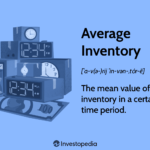What Is Aggregate Demand?
Aggregate demand is a measurement of the total amount of demand for all finished goods and services produced in an economy. Aggregate demand is commonly expressed as the total amount of money exchanged for those goods and services at a specific price level and point in time.
Key Takeaways
- Aggregate demand measures the total amount of demand for all finished goods and services produced in an economy.
- Aggregate demand is expressed as the total amount of money spent on those goods and services at a specific price level and point in time.
- Aggregate demand consists of all consumer goods, capital goods, exports, imports, and government spending.
Understanding Aggregate Demand
Aggregate demand is a macroeconomic term and can be compared with the gross domestic product (GDP). GDP represents the total amount of goods and services produced in an economy while aggregate demand is the demand or desire for those goods. Aggregate demand and GDP commonly increase or decrease together.
Aggregate demand equals GDP only in the long run after adjusting for the price level. Short-run aggregate demand measures total output for a single nominal price level without adjusting for inflation. Other variations in calculations can occur depending on the methodologies used and the various components.
Aggregate demand consists of all consumer goods, capital goods, exports, imports, and government spending programs. All variables are considered equal if they trade at the same market value.
While aggregate demand helps determine the overall strength of consumers and businesses in an economy, it does have limits. Since aggregate demand is measured by market values, it only represents total output at a given price level and does not necessarily represent the quality of life or standard of living in a society.
Aggregate Demand Components
Aggregate demand is determined by the overall collective spending on products and services by all economic sectors on the procurement of goods and services by four components:
Consumption Spending
Consumer spending represents the demand by individuals and households within the economy. While there are several factors in determining consumer demand, the most important is consumer incomes and the level of taxation.
Investment Spending
Investment spending represents businesses’ investment to support current output and increase production capability. It may include spending on new capital assets such as equipment, facilities, and raw materials.
Government Spending
Government spending represents the demand produced by government programs, such as infrastructure spending and public goods. This does not include services such as Medicare or social security, because these programs simply transfer demand from one group to another.
Net Exports
Net exports represent the demand for foreign goods, as well as the foreign demand for domestic goods. It is calculated by subtracting the total value of a country’s exports from the total value of all imports.
Aggregate Demand Formula
The equation for aggregate demand adds the amount of consumer spending, investment spending, government spending, and the net of exports and imports. The formula is shown as follows:
Aggregate Demand=C+I+G+Nxwhere:C=Consumer spending on goods and servicesI=Private investment and corporate spending onnon-final capital goods (factories, equipment, etc.)G=Government spending on public goods and socialservices (infrastructure, Medicare, etc.)Nx=Net exports (exports minus imports)
The aggregate demand formula above is also used by the Bureau of Economic Analysis to measure GDP in the U.S.
Aggregate Demand Curve
Like most typical demand curves, it slopes downward from left to right with goods and services on the horizontal X-axis and the overall price level of the basket of goods and services on the vertical Y-axis. Demand increases or decreases along the curve as prices for goods and services either increase or decrease.
What Affects Aggregate Demand?
Interest Rates
Interest rates affect decisions made by consumers and businesses. Lower interest rates will lower the borrowing costs for big-ticket items such as appliances, vehicles, and homes and companies will be able to borrow at lower rates, often leading to capital spending increases. Higher interest rates increase the cost of borrowing for consumers and companies and spending tends to decline or grow at a slower pace.
Income and Wealth
As household wealth increases, aggregate demand typically increases. Conversely, a decline in wealth usually leads to lower aggregate demand. When consumers are feeling good about the economy, they tend to spend more and save less.
Inflation Expectations
Consumers who anticipate that inflation will increase or prices will rise tend to make immediate purchases leading to rises in aggregate demand. But if consumers believe prices will fall in the future, aggregate demand typically falls.
Currency Exchange Rates
When the value of the U.S. dollar falls, foreign goods will become more expensive. Meanwhile, goods manufactured in the U.S. will become cheaper for foreign markets. Aggregate demand will, therefore, increase. When the value of the dollar increases, foreign goods are cheaper and U.S. goods become more expensive to foreign markets, and aggregate demand decreases.
Economic Conditions and Aggregate Demand
Economic conditions can impact aggregate demand whether those conditions originated domestically or internationally. The financial crisis of 2007-08, sparked by massive amounts of mortgage loan defaults, and the ensuing Great Recession, offer a good example of a decline in aggregate demand due to economic conditions.
With businesses suffering from less access to capital and fewer sales, they began to lay off workers and GDP growth contracted in 2008 and 2009, resulting in a total production contraction in the economy during that period. A poor-performing economy and rising unemployment led to a decline in personal consumption or consumer spending. Personal savings also surged as consumers held onto cash due to an uncertain future and instability in the banking system.
In 2020, the COVID-19 pandemic caused reductions in both aggregate supply or production, and aggregate demand or spending. Social distancing measures and concerns about the spread of the virus caused a significant decrease in consumer spending, particularly in services as many businesses closed. These dynamics lowered aggregate demand in the economy. As aggregate demand fell, businesses either laid off part of their workforces or otherwise slowed production as employees contracted COVID-19 at high rates.
Aggregate Demand vs. Aggregate Supply
In times of economic crises, economists often debate as to whether aggregate demand slowed, leading to lower growth, or GDP contracted, leading to less aggregate demand. Whether demand leads to growth or vice versa is economists’ version of the age-old question of what came first—the chicken or the egg.
Boosting aggregate demand also boosts the size of the economy regarding measured GDP. However, this does not prove that an increase in aggregate demand creates economic growth. Since GDP and aggregate demand share the same calculation, it only indicates that they increase concurrently. The equation does not show which is the cause and which is the effect.
Early economic theories hypothesized that production is the source of demand. The 18th-century French classical liberal economist Jean-Baptiste Say stated that consumption is limited to productive capacity and that social demands are essentially limitless, a theory referred to as Say’s Law of Markets.
Say’s law, the basis of supply-side economics, ruled until the 1930s and the advent of the theories of British economist John Maynard Keynes. By arguing that demand drives supply, Keynes placed total demand in the driver’s seat. Keynesian macroeconomists have since believed that stimulating aggregate demand will increase real future output and the total level of output in the economy is driven by the demand for goods and services and propelled by money spent on those goods and services.
Keynes considered unemployment to be a byproduct of insufficient aggregate demand because wage levels would not adjust downward fast enough to compensate for reduced spending. He believed the government could spend money and increase aggregate demand until idle economic resources, including laborers, were redeployed.
Other schools of thought, notably the Austrian School and real business cycle theorists stress consumption is only possible after production. This means an increase in output drives an increase in consumption, not the other way around. Any attempt to increase spending rather than sustainable production only causes maldistribution of wealth or higher prices, or both.
As a demand-side economist, Keynes further argued that individuals could end up damaging production by limiting current expenditures—by hoarding money, for example. Other economists argue that hoarding can impact prices but does not necessarily change capital accumulation, production, or future output. In other words, the effect of an individual’s saving money—more capital available for business—does not disappear on account of a lack of spending.
What Factors Affect Aggregate Demand?
Aggregate demand can be impacted by a few key economic factors. Rising or falling interest rates will affect decisions made by consumers and businesses. Rising household wealth increases aggregate demand while a decline usually leads to lower aggregate demand. Consumers’ expectations of future inflation will also have a positive correlation with aggregate demand. Finally, a decrease (or increase) in the value of the domestic currency will make foreign goods costlier (or cheaper) while goods manufactured in the domestic country will become cheaper (or costlier) leading to an increase (or decrease) in aggregate demand.
What Are Some Limitations of Aggregate Demand?
While aggregate demand helps determine the overall strength of consumers and businesses in an economy, it does pose some limitations. Since aggregate demand is measured by market values, it only represents total output at a given price level and does not necessarily represent quality or standard of living. Also, aggregate demand measures many different economic transactions between millions of individuals and for different purposes. As a result, it can become challenging when trying to determine the causes of demand for analytical purposes.
What’s the Relationship Between GDP and Aggregate Demand?
GDP (gross domestic product) measures the size of an economy based on the monetary value of all finished goods and services made within a country during a specified period. As such, GDP is the aggregate supply. Aggregate demand represents the total demand for these goods and services at any given price level during the specified period. Aggregate demand eventually equals gross domestic product (GDP) because the two metrics are calculated in the same way. As a result, aggregate demand and GDP increase or decrease together.
The Bottom Line
Aggregate demand is a concept of macroeconomics that represents the total demand within an economy for all kinds of goods and services at a certain price point. In the long term, aggregate demand is indistinguishable from GDP. However, aggregate demand is not a perfect metric and it is the subject of debate among economists.



